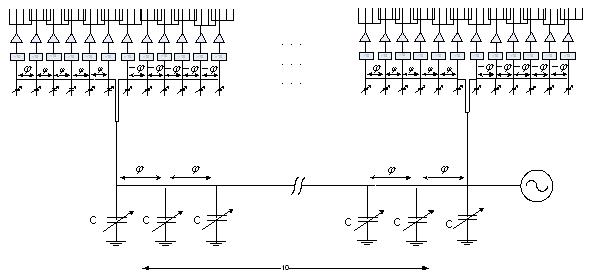Certain applications require phased arrays with ultra narrow beam width and moderate scan angle in the azimuth. To fulfill this stringent requirement on the beam width, conventional phased arrays impose heavy cost and complex circuitry usually unaffordable in commercial systems. Utilizing extended resonance in conjunction with the interleaved sub array technique the cost and complexity of such arrays is significantly reduced which suits them for commercial applications.
Phase shifters are considered to be the most sensitive and expensive part of a phased array. It has been estimated that almost half of the cost of a phased array is due to the cost of the phase shifters used. The extended resonance technique eliminates the need for separate power splitter and phase shifters in a conventional phased array system, and achieves power dividing and phase shifting using the same circuitry, resulting in significant amount of reduction in the circuit complexity and cost.
Fig.1 Extended resonance phased array concept
Furthermore the number of power dividing and combining ports can be reduced through interleaving radiating elements which also results into a compact array. Therefore the tentative structure of the arrays should look like Fig. 2.
Fig. 2 Extended resonance interleaved subarray phased array
The phase shifting structure of Fig.1 fails to work if the number of phase shifting elements is large. A new circuit which is more robust to number of ports and tolerances is under further study.

